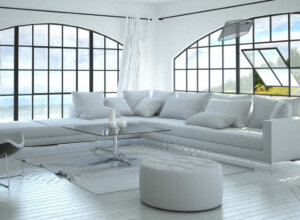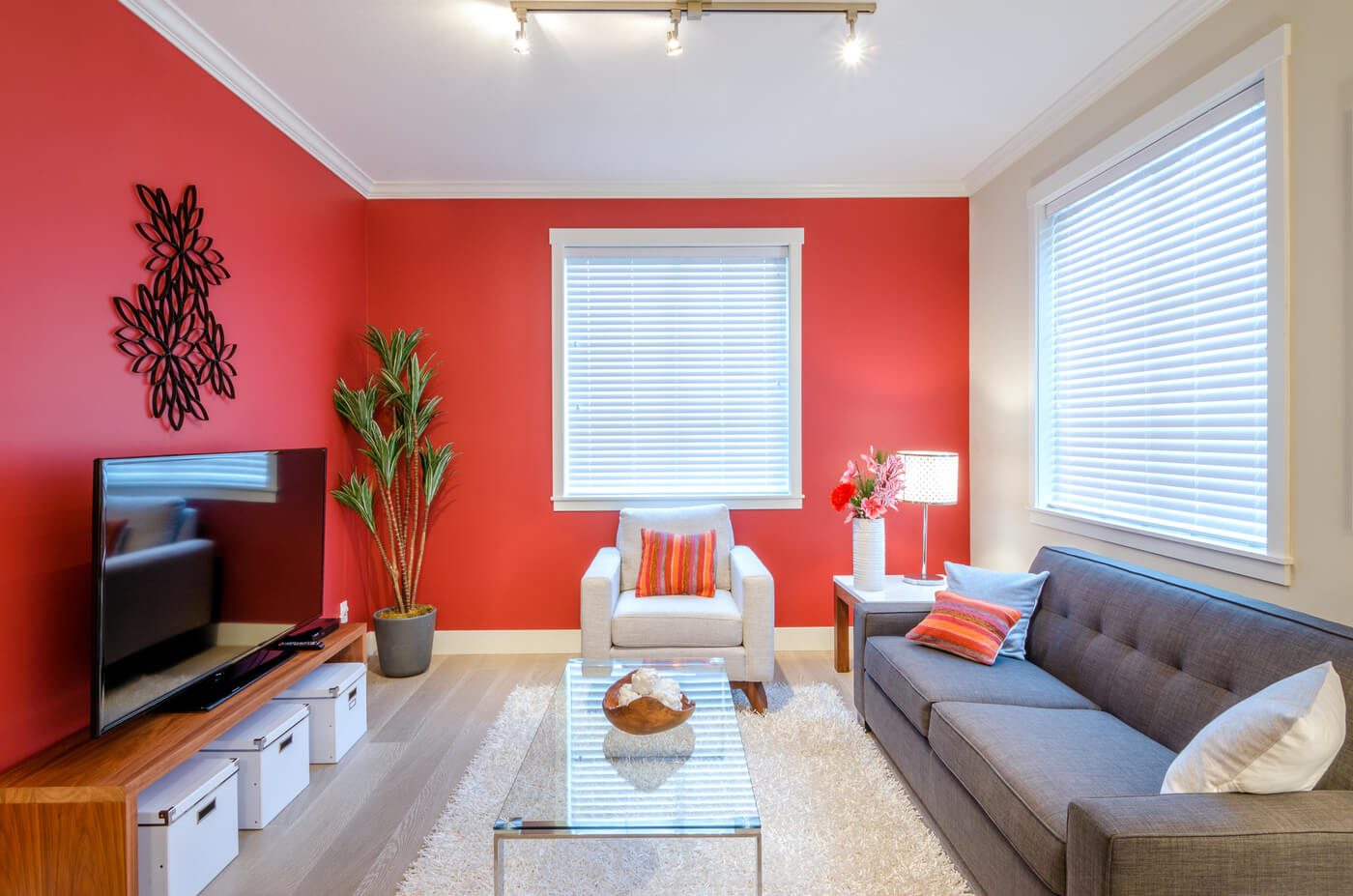Glass Tables For Your Living Room

When it comes to decorating your home, inserting originality, and personality are key. In light of this, you must be aware of the choices you make and the importance of using sustainable furniture. For this reason, we’re going to discuss how to use glass tables in your living room.
Glass is an interesting component for interiors. It can be used in many different ways to attain prominence. However, it should always provide an aesthetic principle that, in turn, becomes functional.
We all likely have numerous different items at home made from this material. Glass helps us to decorate with elegance and singularity, but also offers an interesting transparency.
Classic-style glass tables for your living room

Typically, we all place a small coffee table in front of the sofa to display ornaments and magazines. As such, these items are arranged with a utilitarian purpose and used, in equal measure, to decorate.
These types of tables are available in different formats, styles, and shapes. Circular ones with resistant glass particularly stand out because they leave the lower part visible. This creates an attractive translucency. However, other types of glass tables use opaque glass, which is a great option if you want to hide the lower part of your table.
Rectangular tables are usually smaller and aren’t as high as circular tables. This means they often complement the straight lines of sofas and generate a certain sensation of stability between your furniture.
Avant-garde style central tables
The Bauhaus School left us all an important artistic legacy. This design principle offered aesthetic tendencies linked to the avant-garde, with classic-style tables that fit into modern homes. In this sense, current interior design practices still reflect the Bauhaus style. Let’s look at some well-known examples:
- Erich Brendel’s folding table is, without a doubt, a striking piece of furniture. It denotes a curious aesthetic definition, both for its representation and for its structure.
- Moreover, the so-called LC6 by Le Corbusier follows a simple and basic line. It’s made up of metal legs that support a glass plate. This style doesn’t create contrast concerning the furniture you place around it.
Glass tables with beveled edges
When we consider the classic glass table style, most of these formats have beveled edges. This produces a striking and dynamic effect but, at the same time, still creates an illusion of space.
You’ll find many examples within this style, from those with basic curved designs to those with an organic approach. The style you choose should depend on the creativity and ingenuity reflected in the piece.
Nest tables: an elementary resource
When it comes to functionality, you can consider and assess the contribution of nest tables. What’s your ideal typology? Let’s consider one fundamental fact surrounding nest tables: their simplicity. After all, this piece of furniture is attractive because of its simple appearance and practical function.
The design stands out for its ability to divide into parts and obtain, from there, two or three smaller tables. Of course, there are also various styles to consider too, including the shape. Generally following the typical auxiliary table model, nest tables will fulfill your purpose and transmit serenity and efficiency to your design approach.
Contemporary glass tables
Within the contemporary style, you’ll find different variants. Some tables have an innovative and modern appearance, while others stand out for their glass structure.
There are also designs exposing the glass, making the table appear as if it were floating. These tables have a central support and the rest of the table remains open without any type of support. This is one of the most original glass table types currently available.
In short, contemporary tables stand out for their unique and striking appearance both for their shape and their decorative content.
When it comes to decorating your home, inserting originality, and personality are key. In light of this, you must be aware of the choices you make and the importance of using sustainable furniture. For this reason, we’re going to discuss how to use glass tables in your living room.
Glass is an interesting component for interiors. It can be used in many different ways to attain prominence. However, it should always provide an aesthetic principle that, in turn, becomes functional.
We all likely have numerous different items at home made from this material. Glass helps us to decorate with elegance and singularity, but also offers an interesting transparency.
Classic-style glass tables for your living room

Typically, we all place a small coffee table in front of the sofa to display ornaments and magazines. As such, these items are arranged with a utilitarian purpose and used, in equal measure, to decorate.
These types of tables are available in different formats, styles, and shapes. Circular ones with resistant glass particularly stand out because they leave the lower part visible. This creates an attractive translucency. However, other types of glass tables use opaque glass, which is a great option if you want to hide the lower part of your table.
Rectangular tables are usually smaller and aren’t as high as circular tables. This means they often complement the straight lines of sofas and generate a certain sensation of stability between your furniture.
Avant-garde style central tables
The Bauhaus School left us all an important artistic legacy. This design principle offered aesthetic tendencies linked to the avant-garde, with classic-style tables that fit into modern homes. In this sense, current interior design practices still reflect the Bauhaus style. Let’s look at some well-known examples:
- Erich Brendel’s folding table is, without a doubt, a striking piece of furniture. It denotes a curious aesthetic definition, both for its representation and for its structure.
- Moreover, the so-called LC6 by Le Corbusier follows a simple and basic line. It’s made up of metal legs that support a glass plate. This style doesn’t create contrast concerning the furniture you place around it.
Glass tables with beveled edges
When we consider the classic glass table style, most of these formats have beveled edges. This produces a striking and dynamic effect but, at the same time, still creates an illusion of space.
You’ll find many examples within this style, from those with basic curved designs to those with an organic approach. The style you choose should depend on the creativity and ingenuity reflected in the piece.
Nest tables: an elementary resource
When it comes to functionality, you can consider and assess the contribution of nest tables. What’s your ideal typology? Let’s consider one fundamental fact surrounding nest tables: their simplicity. After all, this piece of furniture is attractive because of its simple appearance and practical function.
The design stands out for its ability to divide into parts and obtain, from there, two or three smaller tables. Of course, there are also various styles to consider too, including the shape. Generally following the typical auxiliary table model, nest tables will fulfill your purpose and transmit serenity and efficiency to your design approach.
Contemporary glass tables
Within the contemporary style, you’ll find different variants. Some tables have an innovative and modern appearance, while others stand out for their glass structure.
There are also designs exposing the glass, making the table appear as if it were floating. These tables have a central support and the rest of the table remains open without any type of support. This is one of the most original glass table types currently available.
In short, contemporary tables stand out for their unique and striking appearance both for their shape and their decorative content.
All cited sources were thoroughly reviewed by our team to ensure their quality, reliability, currency, and validity. The bibliography of this article was considered reliable and of academic or scientific accuracy.
- Gilliat, Mary: Curso de interiorismo, Blume, 2008.







